Five things to watch in markets in the week ahead
Introduction & Market Context
Clariane SE (PAR:CLARI) presented its Q1 2025 revenue results on April 25, 2025, reporting solid organic growth across all business segments despite ongoing financial restructuring efforts. The healthcare provider’s stock declined 6.14% to €3.54 during the session, reflecting continued investor caution despite operational improvements.
The company’s shares have experienced significant volatility, having returned an impressive 282% over the past year according to market data, but recent trading suggests investors remain concerned about the company’s financial structure and long-term sustainability.
Quarterly Performance Highlights
Clariane reported Q1 2025 revenue of €1.32 billion, representing a modest reported growth of 0.7% compared to Q1 2024. However, the company achieved a more substantial 4.8% organic growth (5.5% excluding leap year impact), with all regions and business segments contributing positively.
As shown in the following chart of organic growth by geography, the German and Benelux operations led performance with 8.0% and 7.8% organic growth respectively:

The company’s revenue bridge between Q1 2024 and Q1 2025 reveals that price and mix effects (+€47 million, +3.7%) significantly outweighed volume growth (+€13 million, +1.1%), while disposals created a negative perimeter effect of €51 million (-4.1%):
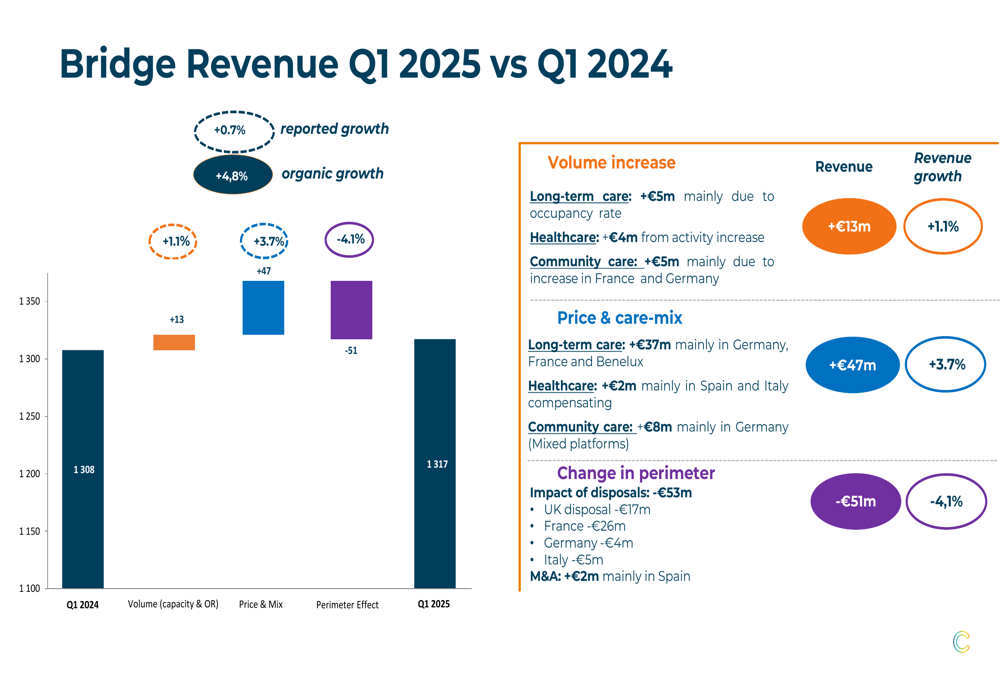
CEO Sophie Boissard expressed confidence in the company’s trajectory during the earnings call, stating, "We will continue to move ahead in the coming months with a great deal of determination and confidence." Meanwhile, CFO Gregory Lidovsky highlighted the shift in revenue drivers, noting that "The price effect has overtaken volume to become the main driver of our revenue increase."
Detailed Financial Analysis
Clariane’s business portfolio showed solid growth across all three main activities. Long-term care, representing 63% of total revenue, delivered the strongest organic growth at 5.6% (6.3% excluding leap year impact):

A key operational highlight was the continued improvement in long-term care occupancy rates, which reached 90.4% in Q1 2025, an increase of 0.8 percentage points compared to Q1 2024 (89.6%). This represents a significant recovery from the 85.6% occupancy rate reported in Q1 2022, despite an estimated negative impact of 0.7 percentage points from the flu epidemic during the quarter:
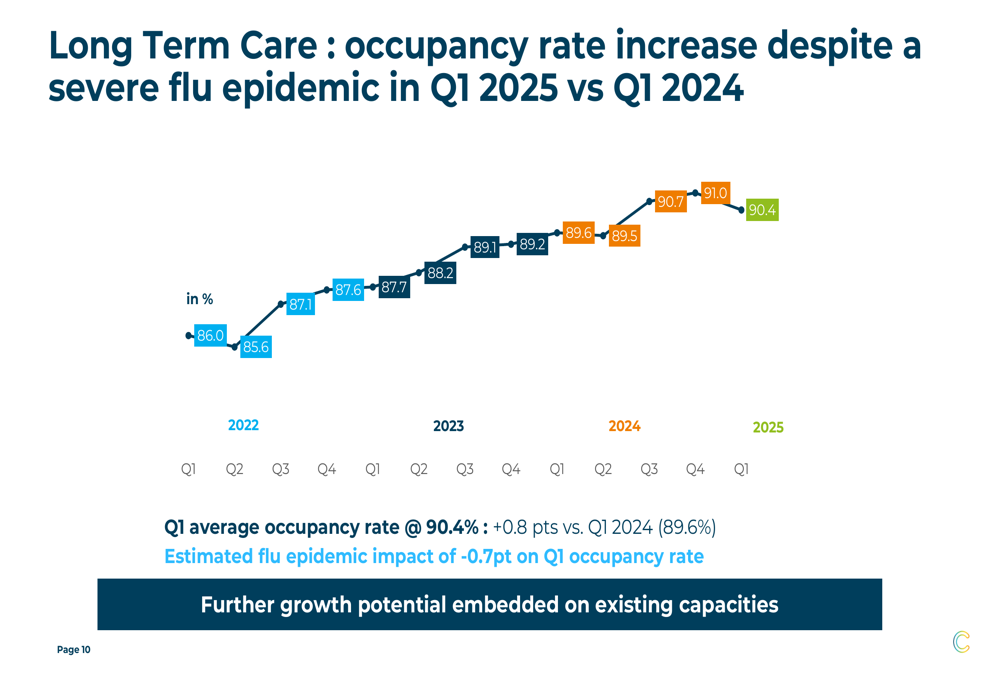
Strategic Initiatives
Clariane continues to execute its financial structure strengthening plan announced in November 2023, which aims to reduce debt and improve leverage ratios by the end of 2025. The plan consists of four main components:
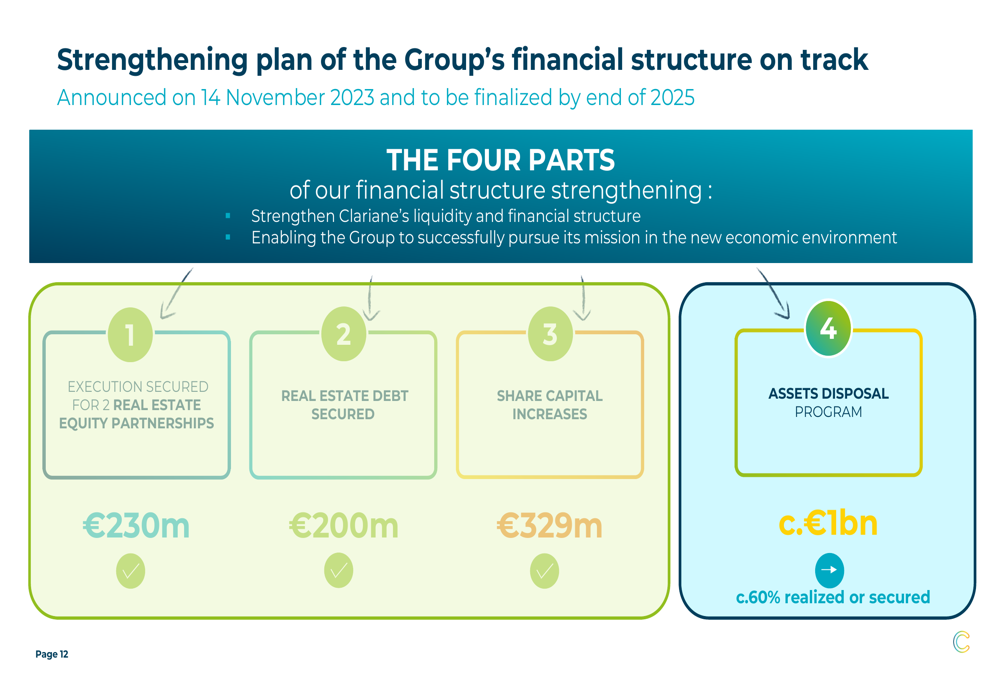
A central element of this strategy is the €1 billion asset disposal program, which the company reports is over 60% realized or secured. Recent progress includes the completion of the UK operations disposal on April 9, 2024, and the sale of various smaller operational assets in France, Italy, and Germany for approximately €100 million:
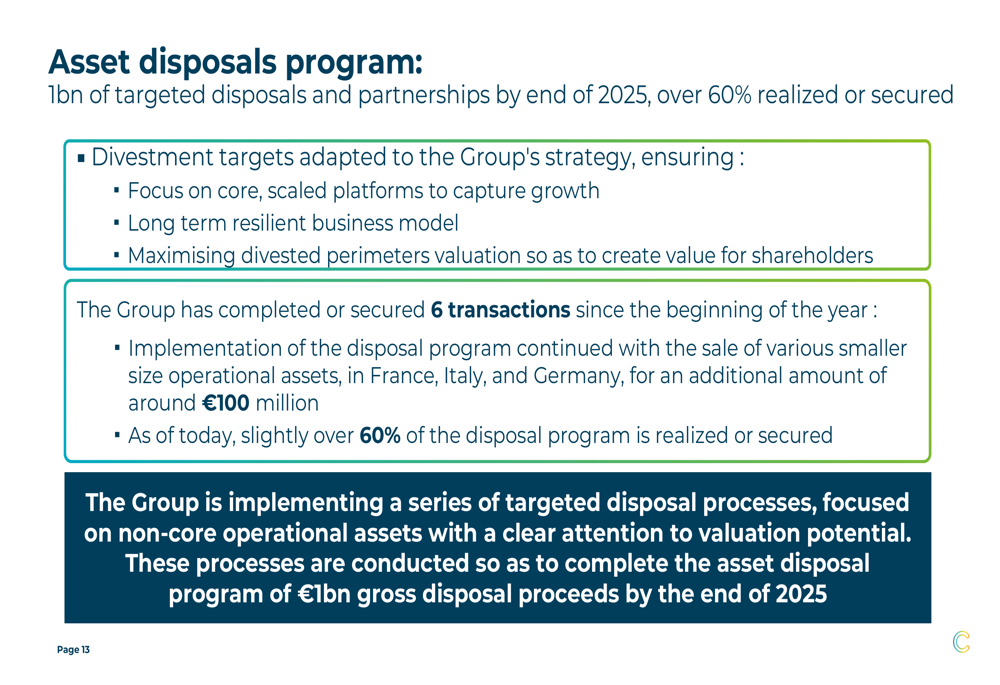
"The divestment targets are adapted to the Group’s strategy, ensuring focus on core, scaled platforms to capture growth while maintaining a long-term resilient business model," management stated in the presentation.
Forward-Looking Statements
Clariane confirmed its 2025 outlook, projecting organic revenue growth of approximately 5% and EBITDA growth between 6% and 9%. The company aims to reduce its whole-company leverage ratio to below 5.5x by the end of 2025 and below 5.0x by the end of 2026:
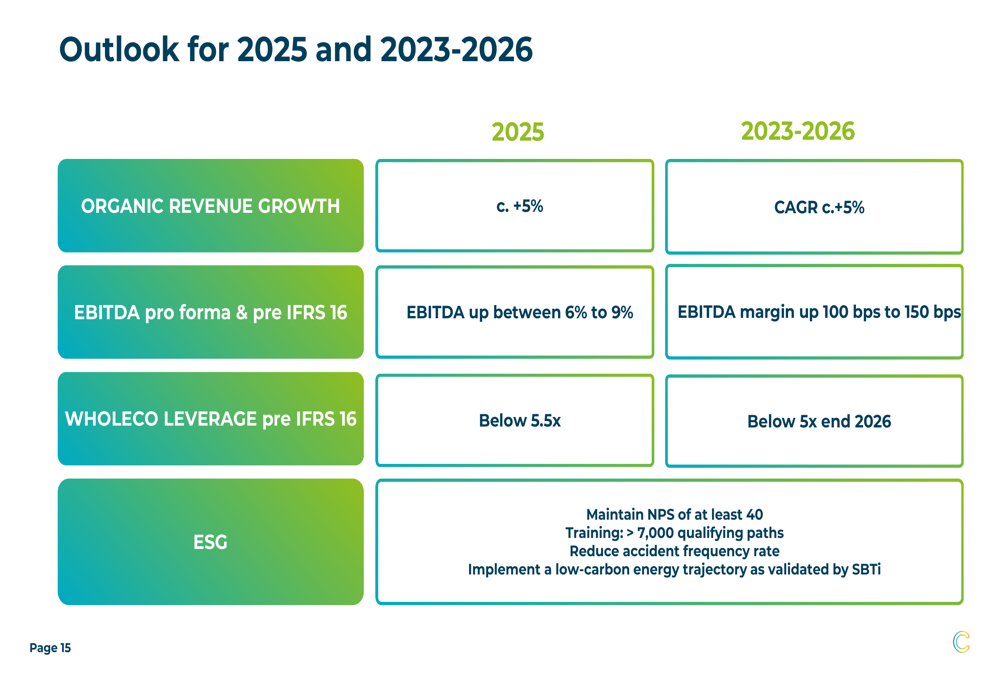
The company’s key performance highlights for Q1 2025 reinforce management’s confidence in achieving these targets:
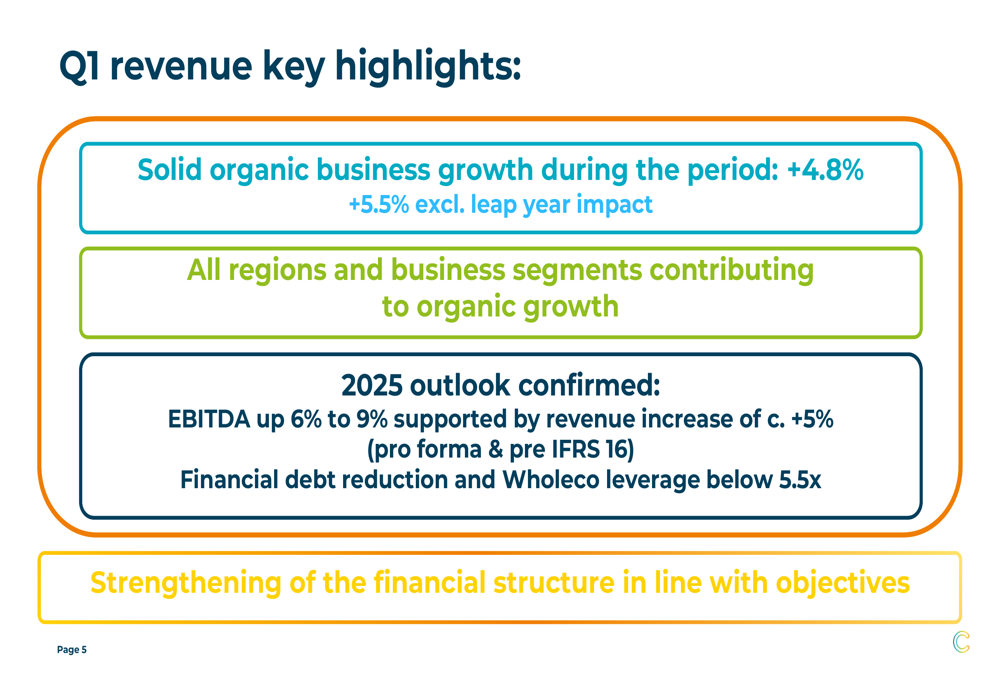
Despite the positive operational performance and confirmed outlook, investors appear to remain cautious about Clariane’s ability to successfully complete its financial restructuring while maintaining growth momentum. The stock’s decline following the presentation suggests the market may require additional evidence of sustainable financial improvement before fully embracing the company’s turnaround story.
Potential challenges ahead include managing wage inflation, particularly in Germany, navigating geographical pricing variations, and balancing continued investment in network upgrades with debt reduction goals. The company’s ability to execute its asset disposal program at favorable valuations will be crucial for achieving its leverage targets and restoring investor confidence.
Full presentation:
This article was generated with the support of AI and reviewed by an editor. For more information see our T&C.
